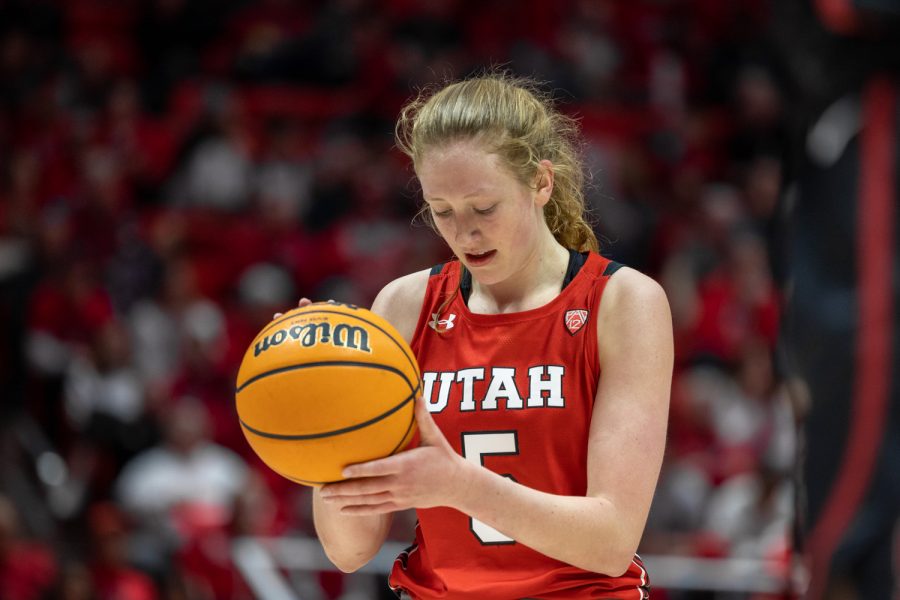Moving Towards Pay Equality in the WNBA
President Barack Obama welcomes the WNBA Champion Indiana Fever to the East Room of the White House to honor the team and their victory in the WNBA Finals, June 14, 2013. (Photo by Chuck Kennedy | Courtesy Obama White House Archives)
January 29, 2020
This week, The Chronicle’s sports desk took on the topic of the new CBA for the WNBA and how the deal stacks up versus the NBA.
Mallory Arnold
Pay disparities for women and men have been a big topic for all jobs, specifically for professional athletes. With the United States Women’s National Soccer team leading the discussion right now, the WNBA has shifted its focus. This past week, the WNBA has made changes to their CBA agreement so that women in the National Basketball Association can get paid more. This agreement will last eight years and starts in the upcoming 2020 season.
“There are significant gains all across the board in this new agreement, and everything is in place for our players and the league to thrive,” WNBPA Executive Director Terri Jackson said in a statement.
So what exactly is a CBA? CBA stands for collective bargaining agreement. It essentially is an agreement that puts salary caps, trades and roster size on all teams/players in the NBA or WNBA. Changing this agreement is a big step as the league’s highest paid players were getting around $117,500 — which will increase to $215,000. The league salary cap will jump from $996,100 to $1.3 million.
The NBA’s salary cap is $109.14 million, so this puts the women’s league $107.84 million behind them. Last year, the average pay for an NBA player was $7.7 million, but for a WNBA player, it was $116,000. While this change is huge in decreasing the pay gap, is it still too large? By paying these women more, the WNBA is hoping to increase competitiveness and has delegated more money to the marketing aspect of the sport. Usually, the issue with women’s sports is not enough marketing. This change should help fans to notice more players. Overall, players are getting a 53% increase in pay and maternity benefits.
WNBPA President Nneka Ogwumike said to CNBC, “We found common ground in areas that confirmed the league’s and the players’ intentions to not only make meaningful improvements in working conditions and overall professional experience, but also to improve the business with strategic planning and intentional marketing that will keep the WNBA front and center year-round.”
This year has been a big year for female athletes in the basketball world overall as Nike started selling college jerseys for women’s basketball too. Oregon Duck player Sabrina Ionescu’s jersey sold out within hours of being up.
m.arnold@dailyutahchronicle.com
Ethan Pearce
The pay of WNBA athletes compared to their NBA counterparts has been an issue for a while. For many reasons, the female athletes have always been paid less than the men. The players can only be paid a percentage of the money the league brings in, so that’s the first issue.
The NBA brings in a huge amount of money, especially compared to the WNBA. According to WSN.com, the NBA brings in about $7.4 billion per year. The WNBA league makes only $60 million in revenue. The least valuable NBA team, the Memphis Grizzlies, is worth $1.2 billion by itself. The NBA salary cap is $109.14 billion while the WNBA’s will sit at just $1.3 million after the new CBA is adopted. The NBA’s highest-paid player, Stephen Curry, will make almost $40 million this season. The WNBA’s Brittany Griner makes just $113,500.
These numbers are so lopsided that many WNBA players take to playing overseas during the offseason. They sign with clubs in China, Europe and Australia to gain some extra money because their WNBA checks just aren’t cutting it.
These are just the facts of the situation, but this isn’t unusual. For a league as new as the WNBA, this is par for the course. New leagues go through this process before they finally begin to turn a large profit. This happened with the NBA, NFL, MLB and pretty much every professional league before. The WNBA was founded in 1996, and since then, teams have been moving, folding and adding frequently. Until the league catches on with the fans, it will continue to struggle. The NBA has done a good job of trying to push its sister league to grow. Every year, more and more games are put on TV and advertised to the fans in an attempt to gain more popularity, and while it’s been slow going, there is progress being made. TV ratings jumped by 64% last season, and game attendance is fluctuating but slowly increasing from year to year.
So with all of these numbers showing that the money just doesn’t match up, why are the WNBA players asking for more? Truth is, they aren’t. They just want their percentage of pay to be equal to the NBA. In the men’s league, about half the league’s revenue goes toward paying the athletes. In the WNBA, it’s only about 25%. If adopted, this new CBA would change that, making their percentage more comparable to the NBA. And if the league does catch on, more fan engagement, TV deals and ticket sales will go a long way to finally paying our female athletes what they deserve.













